In 2007, the world held its breath as Steve Jobs unveiled a device that wasn’t just a phone but a portal to a future brimming with possibilities. This was the iPhone, a revolutionary gadget that forever reshaped the view of mobile technology.
This list history the incredible journey of the iPhone, tracing its evolution from its humble beginnings as a single model with a 3.5-inch display to the diverse and influential family of devices we know today. We’ll embark on a chronological voyage through 17 years of innovation, witnessing the introduction of groundbreaking features like the App Store, the Retina display, Face ID, and the A17 Bionic chip.
Join us as we explore the fascinating history of the iPhone, from its humble beginnings to its global impact. In this post, we’ve included all the iPhones in order of their release date since 2007. Over the years, you can see how Apple has introduced new functions and features into its smartphones.
All iPhones in Order of Release Date
2007
iPhone (1st generation)

iPhone (1st generation), also known as the iPhone 2G or original iPhone, was a revolutionary device that launched in June 2007. It Completely redefined what a phone could be and paved the way for modern smartphones.
It was a groundbreaking device that had a profound impact on the mobile industry and beyond. It set the stage for the smartphones we use today and continues to be a significant milestone in the history of technology.
Features
- 3.5-inch display
- 2-megapixel camera
- iPod integration
- Visual voicemail
- Safari web browser
- App Store
2008
iPhone 3G

The iPhone 3G, released in July 2008, marked a significant evolution from its predecessor, the original iPhone while addressing key limitations and adding exciting new features that solidified its position as a game-changer in the mobile market.
It continued the success of the original iPhone, selling millions of units and further solidifying Apple’s position as a leader in the mobile industry. It made 3G data and GPS mainstream features on smartphones, paving the way for future devices to leverage these technologies for even more advanced functionalities.
Features
- 3G network support
- GPS
- App Store Expansion
- Sleeker design
- Voice Control
- Microsoft Exchange support
2009
iPhone 3GS

Released in June 2009, the iPhone 3GS was the successor to the popular iPhone 3G and marked a significant step forward for Apple’s smartphone lineup, earning the “S” in its name for “Speed”.
It was another huge success for Apple, selling over 1 million units in its first weekend alone. It continued the iPhone’s dominance in the smartphone market and solidified its reputation for innovation and user-friendly design. Its faster performance, improved camera, and new features made it a significant upgrade over the iPhone 3G and paved the way for future iPhones.
Features
- “S” for Speed
- 3-megapixel camera with Autofocus
- Video recording
- iOS 3.0
- Magnetometer and Compass
- Voice Control
- Improved Battery Life
- Storage Options (16 GB, 32 GB, 64 GB)
2010
iPhone 4
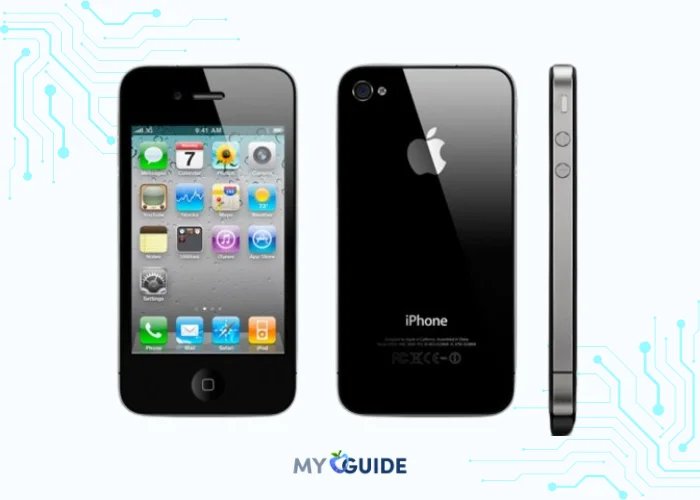
The iPhone 4, released in 2010, was a game-changer for Apple and the smartphone industry. It marked a significant departure from its predecessors in terms of design, performance, and features, solidifying Apple’s position as a leader in innovation.
It was a monumental success, selling over 30 million units in its first year alone. It was praised for its stunning design, powerful performance, and innovative features, winning numerous awards and solidifying Apple’s position as a tech giant. It set a new standard for smartphones and paved the way for future iPhones to continue pushing the boundaries of design and technology.
Features
- Premium material
- Retina Display
- A4 chip
- iOS 4
- 5MP camera
- Front-facing camera
- HD video recording
- Gyroscope
2011
iPhone 4S

The iPhone 4S! Released in 2011, it was the final iPhone unveiled by the iconic Steve Jobs and packed quite a punch.
It was a massive hit, selling over 4 million units in its first weekend alone. It further propelled Apple’s dominance in the smartphone market and showcased its commitment to innovation and user experience. With Siri, an improved camera, and a powerful A5 chip, the iPhone 4S offered a glimpse into the future of mobile technology. While its specs might seem underwhelming today, its legacy lies in pushing the boundaries of what smartphones could do and paving the way for the iPhones we know and love today.
Features
- Dual-core A5 chip
- Siri
- 8-megapixel camera
- iOS 5
- 3.5-inch, 960 x 640-pixel Retina display
- World phone compatibility
2012
iPhone 5

The iPhone 5, released in 2012, was a game-changer for Apple, ushering in a new era of sleek design and powerful performance.
The iPhone 5 was a smash hit, selling over 5 million units in its first three days. It was praised for its stunning design, improved performance, and faster LTE connectivity. It marked a turning point for iPhone design, paving the way for future models’ taller screens and sleek aesthetics.
While modern iPhones surpass their specs, the iPhone 5 holds a special place in tech history for its bold design choices, performance boost, and introduction of the lightning connector. It’s a testament to Apple’s continuous innovation and the enduring appeal of the iPhone brand.
Features
- A6 chip
- LTE support
- 8-megapixels camera
- iOS 6
- Lightning connector
- Larger storage options (16 GB, 32 GB, 64 GB)
2013
iPhone 5c
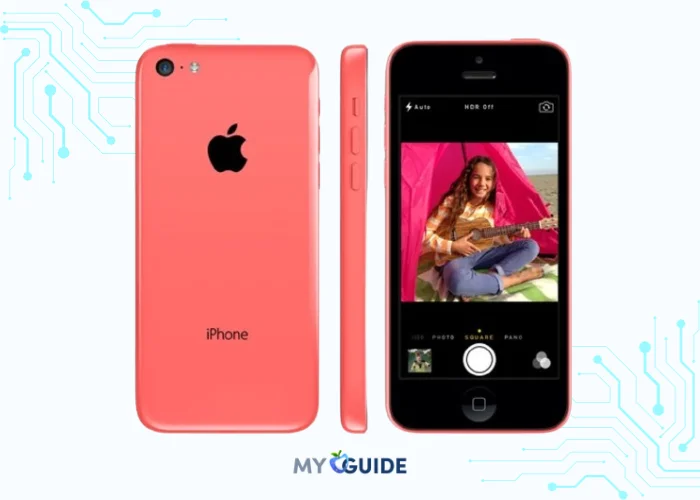
Released in September 2013, the iPhone 5c was a colorful addition to Apple’s smartphone lineup, offering a more affordable and playful alternative to the high-end iPhone 5s.
The iPhone 5c was a commercial success, particularly in emerging markets and among younger audiences. Its attractive price point and colorful design made it a popular choice for first-time iPhone users and budget-conscious customers.
While discontinued in 2015, the iPhone 5c stands as a reminder of Apple’s diverse approach to catering to different market segments. It demonstrated that smartphones could be fun, colorful, and accessible without compromising on performance and user experience.
Features
- 4-inch Retina display
- Apple A6 chip
- 1 GB RAM
- 8MP iSight camera
- 1080p video recording
- iOS 7
- 4G LTE supports
- App Store access
iPhone 5s

The iPhone 5c, released in September 2013 alongside the iPhone 5c, was the high-end flagship model that year. It represented a significant leap forward in technology and design compared to its predecessors.
It was another huge success for Apple, selling over 9 million units in its first three days. It solidified Apple’s position as a leader in smartphone innovation and set the stage for future iPhones with features like Touch ID and 64-bit processing. While technology has advanced significantly since then, the iPhone 5s remains a landmark device that revolutionized mobile security, performance, and design.
Features
- 4-inch, 326 ppi Retina display
- 1GB of RAM
- 16GB, 32GB, or 64GB storage options
- M7 motion coprocessor for tracking fitness data
- Improved LTE speeds
- Longer battery life than the iPhone 5
2014
iPhone 6

The iPhone 6! Released in 2014, it marked a significant shift for Apple, introducing larger screen sizes and ushering in a new era of iPhones.
The iPhone 6 was a huge success, selling over 10 million units in its first three days of availability. It marked a turning point for Apple, solidifying its position as a leader in the smartphone market and paving the way for future large-screen iPhones. While the design and technology may seem dated by today’s standards, the iPhone 6’s impact on the smartphone industry is undeniable.
Features
- A8 chip
- M8 motion coprocessor
- 8 megapixels and boasted a f/2.2 aperture
- First FaceTime HD camera
- Apple Pay
iPhone 6 Plus

The 2014 iPhone 6 Plus, released alongside its smaller sibling, the iPhone 6, marked a significant shift for Apple. It was the first iPhone to come in two sizes, catering to users who craved a larger canvas for their mobile experience.
The iPhone 6 Plus was a commercial success, selling millions of units and solidifying Apple’s position as a leader in the smartphone market. It paved the way for the trend of larger smartphones and opened up a new market segment for Apple. While its specs seem modest compared to today’s flagships, it was a revolutionary device in its time, offering a powerful and immersive mobile experience in a larger form factor.
Features
- A8 chip
- M8 motion coprocessor
- 8-megapixel iSight camera
- 1.2-megapixel F/aceTime HD camera
- Apple Pay
- Improved connectivity
2015
iPhone 6s

The iPhone 6s, released in September 2015, marked a significant iteration in the iPhone lineup, building upon the successful iPhone 6 with several key improvements.
The iPhone 6s was another commercial success for Apple, selling over 70 million units in its first year. It was praised for its improved performance, cameras, and innovative features like 3D Touch, which laid the groundwork for future iPhone interactions. While later models have surpassed it in terms of power and capabilities, the 6s remains a significant device in Apple’s history, marking a turning point with its focus on both hardware and software advancements.
Features
- 3D Touch
- Improved processing power
- iOS 9
- Live Photos
- Touch ID 2nd generation
- Hey Siri
iPhone 6s Plus
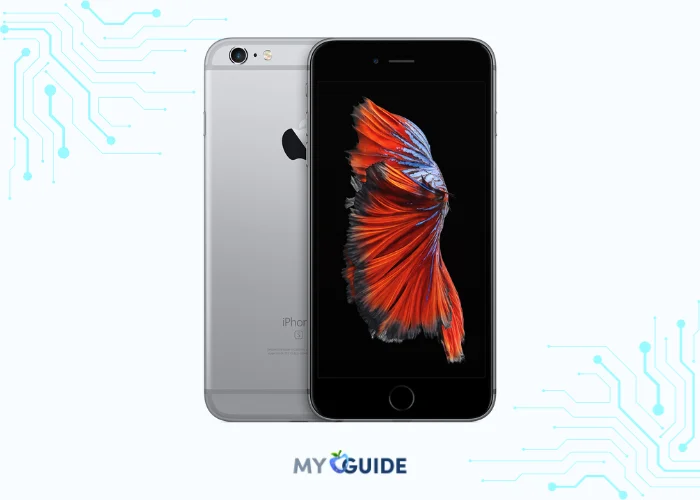
The iPhone 6s Plus, released in September 2015, was Apple’s larger and more feature-packed version of the iPhone 6s. It marked a significant step forward in terms of performance, camera capabilities, and user experience.
The iPhone 6s Plus was a major success, selling millions of units and solidifying Apple’s position as a leader in the smartphone market. It was praised for its powerful performance, improved camera, innovative 3D Touch technology, and longer battery life. While no longer the latest iPhone model, the 6s Plus remains a capable and enjoyable device for users who prefer a larger screen and appreciate its powerful features.
Features
- A9 chip with M9 motion coprocessor
- 3D Touch
- 12-megapixel rear camera with optical image stabilization (OIS)
- 5-megapixel FaceTime HD camera
- Touch ID fingerprint sensor
- Stronger aluminum design
2016
iPhone SE (1st generation)

The iPhone SE (1st generation), released in March 2016, was a unique device in Apple’s lineup. It combined the powerful specs and features of the iPhone 6s with the familiar design of the iPhone 5s, making it a more affordable option for budget-conscious Apple fans.
The iPhone SE (1st generation) was a popular choice for budget-conscious Apple fans and those who preferred a smaller phone. It proved that you didn’t need the latest and greatest design to have a powerful and capable smartphone. While it has been discontinued and surpassed by newer models, the iPhone SE (1st generation) remains a testament to Apple’s ability to deliver excellent performance and features at a more accessible price point.
Features
- Compact and iconic
- Powerful performance
- 12-megapixel rear camera
- Live Photos
- Apple Pay
- iOS 9.3
iPhone 7

Released in September 2016, the iPhone 7 marked a significant step forward for Apple’s smartphones, introducing several key innovations and improvements.
The iPhone 7 was a huge commercial success, selling millions of units and solidifying Apple’s position as a leader in the smartphone market. Its water resistance, improved cameras, and faster performance were major selling points, attracting both new and existing customers. While the headphone jack removal caused some stir, it paved the way for the adoption of wireless headphones and ultimately proved to be a successful move for Apple.
Features
- A10 Fusion Chip
- Larger Storage Options
- Taptic Engine
- iOS 10
- Headphone Jack Removal
iPhone 7 Plus
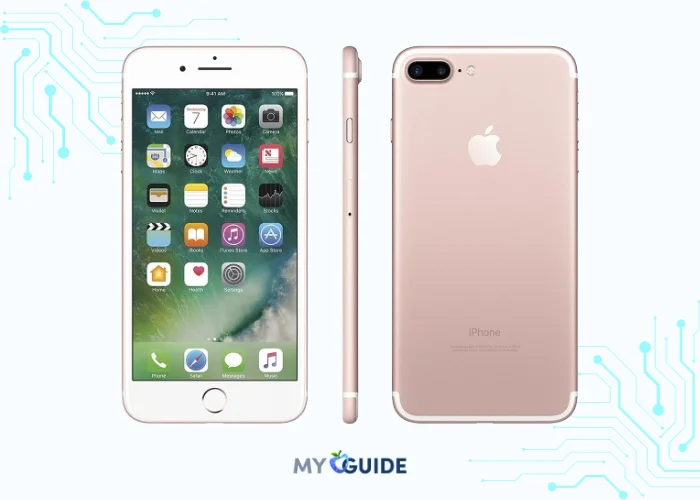
The iPhone 7 Plus, released in September 2016, was a significant upgrade over its predecessor, the iPhone 6s Plus. It brought a host of new features and improvements, making it a popular choice for many users.
The iPhone 7 Plus was a major success for Apple, selling millions of units worldwide. Its dual-lens camera system, improved performance, and longer battery life made it a compelling upgrade for many users. It solidified Apple’s position as a leader in smartphone innovation and paved the way for future iPhones with even more advanced camera systems and features.
Features
- Dual-lens rear camera
- Water and dust resistance
- Faster A10 Fusion processor
- Improved battery life
- 3GB of RAM
- 32GB, 128GB, or 256GB storage options
- iOS 10
2017
iPhone 8

Released in September 2017, the iPhone 8 was Apple’s eleventh-generation smartphone, succeeding the iPhone 7.
The iPhone 8 was a solid and reliable smartphone in 2017, offering a familiar design, improved performance, and some new features like wireless charging. However, it lacked the innovative design and some cutting-edge features of the iPhone X released alongside it.
Features
- Retina HD display
- Powerful A11 Bionic chip
- iOS 11
- Advanced cameras
- 7 MP front camera
- Wireless charging
- Touch ID
iPhone 8 Plus

Sure, the iPhone 8 Plus, also released in September 2017, was the larger sibling of the iPhone 8 and shared many of its features but with some key upgrades.
The iPhone 8 Plus was a more premium option compared to the iPhone 8, offering a bigger screen, a versatile dual-camera system, and better battery life. It was a compelling choice for users who wanted a powerful and feature-packed iPhone in 2017.
Features
- A11 Bionic chip
- Touch ID
- Water and dust resistance
- iOS 11
- Wireless charging
iPhone X

The iPhone X, released in November 2017, marked a significant shift in Apple’s design philosophy and introduced several groundbreaking features.
It was a revolutionary phone that marked a new era for Apple. Its innovative design, powerful performance, improved cameras, and unique features like Face ID and Animoji made it a highly sought-after device. However, it also came with a hefty price tag, making it the most expensive iPhone at the time.
Features
- Super Retina HD display
- iOS 11 and Face ID
- TrueDepth camera and Animoji
- A11 Bionic chip
- Wireless charging
- Water and dust resistance
2018
iPhone XS

Released in September 2018, the iPhone XS was Apple’s twelfth-generation flagship, succeeding the iPhone X. It represented a significant step forward in performance, camera quality, and display technology compared to its predecessor.
It was a top-of-the-line smartphone in 2018, offering a luxurious design, a superb display, unmatched performance, and a versatile camera system. It was a significant upgrade over the iPhone X and catered to users who demanded the best from their smartphone.
Features
- Super Retina OLED display
- A12 Bionic chip
- Dual 12 MP cameras
- Improved water resistance
- faster Face ID
- Dual SIM support
- Gigabit LTE
- wireless charging
iPhone XS Max

Released in September 2018, the iPhone XS Max was the larger variant of the iPhone XS and Apple’s thirteenth-generation flagship smartphone. It boasted several upgrades over its predecessor, the iPhone X, making it a powerful and feature-packed device at the time.
It was a top-of-the-line smartphone in 2018, offering a stunning display, exceptional performance, a versatile camera system, and innovative features like Face ID and dual SIM support. It provided a truly premium experience for users who demanded the best.
Features
- A12 Bionic chip
- Dual-camera system
- Dual SIM support
- Face ID
- Water and dust resistance
- Wireless charging
- iOS 12
iPhone XR

Released in October 2018, the iPhone XR was Apple’s twelfth-generation smartphone and positioned itself as a more affordable option compared to the flagship iPhone XS and XS Max.
The iPhone XR was a popular choice for users seeking a powerful and colorful iPhone at a more accessible price point. It delivered a solid performance, a vibrant display, and a capable camera system, even without the bells and whistles of its pricier counterparts.
Features
- A12 Bionic chip
- Single-lens Rear Camera
- TrueDepth Front Camera
- Haptic Touch
- Dual SIM Support
2019
iPhone 11

The iPhone 11 was released in 2019 as the successor to the iPhone XR. It was a popular phone, and it’s still a good option in 2023 if you’re looking for an affordable iPhone.
The iPhone 11 has a bright and colorful display, and it’s powered by a fast A13 Bionic chip. The camera system is one of the best on the market, and it takes great photos and videos. The battery life is also good, and you should be able to get a full day of use on a single charge.
Features
- 6.1-inch Liquid Retina HD LCD
- A13 Bionic chip
- Dual-lens 12MP rear camera system
- 12MP front-facing camera
- 4GB of RAM
- 64GB, 128GB, or 256GB of storage
- iOS 13 (upgradable to iOS 16)
iPhone 11 Pro

The iPhone 11 Pro! Released alongside the iPhone 11 in 2019, it was Apple’s top-of-the-line offering that year, packed with powerful features and a premium design.
It was a premium smartphone that offered the best Apple had to offer at the time. Its powerful performance, stunning camera system, and long-lasting battery made it a popular choice for photography enthusiasts and power users. However, it’s important to note that it’s no longer the latest model and lacks some features of newer iPhones, like 5G support and a higher refresh rate display.
Features
- Super Retina XDR OLED display
- 5.8-inch screen size
- Triple-lens rear camera system
- Night Mode
- Longer battery life
- 4GB of RAM
- A13 Bionic chip
iPhone 11 Pro Max
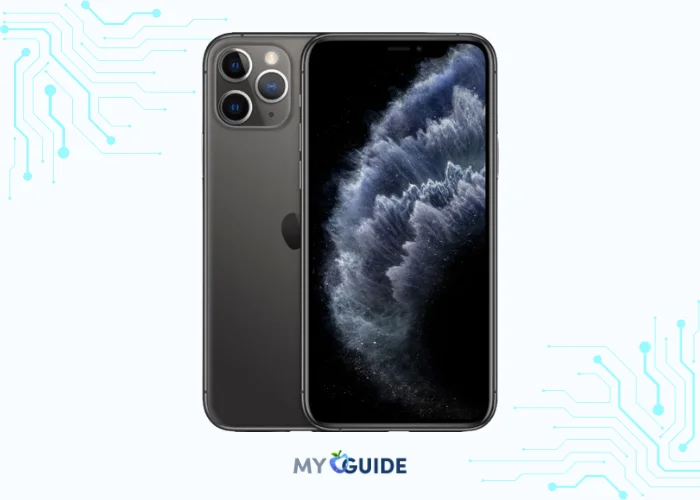
The iPhone 11 Pro Max! Released in 2019 alongside its smaller sibling, the Pro Max was the ultimate iPhone experience at the time, packing in powerful specs, a stunning camera system, and a long-lasting battery.
It was a true powerhouse phone in its day, and while newer models have surpassed it in some areas like 5G connectivity and camera technology, it still remains a fantastic choice. Its premium design, powerful performance, versatile camera system, and long-lasting battery make it a great option for those who demand the best from their smartphone.
Features
- Larger 6.5-inch Super Retina XDR OLED display
- A13 Bionic chip
- 4GB of RAM
- Triple-lens 12MP rear camera system
- 12MP front-facing camera
- Large 3969mAh battery
- Water and dust resistance
- iOS 13 (upgradable to iOS 16)
2020
iPhone 12

Released on November 13, 2020, the iPhone 12 introduced a new design with flat edges and a ceramic shield front for improved durability. It also boasted the A14 Bionic chip and support for 5G connectivity.
Features
- 5G connectivity for faster data speeds
- MagSafe for easy wireless charging and compatibility with MagSafe accessories
- Water and dust-resistant
- iOS 14 (upgradable to iOS 16)
- 2815mAh battery
- Dual-lens 12MP rear camera system
- A14 Bionic chip
iPhone 12 mini

Launched alongside the iPhone 12 on November 13, 2020, the iPhone 12 mini offered the same features and performance as the iPhone 12 but in a compact form factor.
Features
- 4 Bionic chip
- Dual-lens 12MP rear camera system
- Night mode on all cameras
- 12MP front-facing camera
- 2227mAh battery
- 5G connectivity
- Water and dust-resistant
- iOS 14 (upgradable to iOS 16)
iPhone 12 Pro

Arriving alongside the iPhone 12 and 12 mini on November 13, 2020, the iPhone 12 Pro featured a LiDAR scanner for enhanced depth sensing and improved low-light camera performance.
Features
- Blazing-fast A14 Bionic chip
- 6GB RAM for smooth multitasking
- Pro-grade triple-lens 12MP system: wide, telephoto, ultra-wide
- 5G connectivity for faster data speeds
- Water and dust-resistant
- iOS 14 (upgradable to iOS 16)
iPhone 12 Pro Max

Launched alongside the iPhone 12 Pro on November 13, 2020, the iPhone 12 Pro Max offered the same features as the Pro but with a larger display and a larger battery.
Features
- Stunning 6.7-inch Super Retina XDR OLED display
- Blazing-fast A14 Bionic chip
- 6GB RAM for smooth multitasking
- 12MP front-facing camera with Portrait mode
- Long-lasting 3969mAh battery
- Water and dust-resistant
- iOS 14 (upgradable to iOS 16)
2021
iPhone 13

Released on September 24, 2021, the iPhone 13 featured a smaller notch at the top of the display, improved cameras with larger sensors, and a longer battery life than its predecessor.
Features
- Super Retina XDR OLED display
- A15 Bionic chip
- Dual-lens rear camera system
- Cinematic mode
- Sensor-shift image stabilization
- Longer battery life
- Latest iOS 16
iPhone 13 mini

Launched alongside the iPhone 13 on September 24, 2021, the iPhone 13 mini offered the same features and performance as the iPhone 13 but in a compact form factor.
Features
- Compact 5.4-inch Super Retina XDR OLED display, perfect for one-handed use.
- Powerful A15 Bionic chip handles demanding tasks and multitasking with ease.
- Upgraded dual-lens camera system for better photos and videos, including Cinematic mode.
- Sensor-shift stabilization for smoother footage and sharper images.
- Improved battery life compared to iPhone 12 mini, lasting a full day for most users.
iPhone 13 Pro

Arriving alongside the iPhone 13 and 13 mini on September 24, 2021, the iPhone 13 Pro featured a ProMotion display with a 120Hz refresh rate for smoother scrolling and improved camera capabilities with a macro lens.
Features
- Stunning 6.1-inch OLED display with 120Hz refresh rate: Smooth scrolling, ideal for gaming & media.
- Premium design
- Super fast A15 Bionic chip
- Pro-grade triple-lens camera
- Cinematic mode
- ProRes video recording
- Significantly improved battery life
iPhone 13 Pro Max

Launched alongside the iPhone 13 Pro on September 24, 2021, the iPhone 13 Pro Max offered the same features as the Pro but with a larger display and a larger battery.
Features
- Biggest & smoothest display
- Top-tier performance
- Pro-grade camera
- All-day battery life
- Premium design
- Other features: 5G, LiDAR Scanner, MagSafe, Face ID, latest iOS 16
2022
iPhone SE (3rd generation)

Released on March 18, 2022, the iPhone SE (3rd generation) offered the latest A15 Bionic chip and improved cameras in the familiar iPhone 8 design, making it a more affordable option.
Features
- Powerhouse A15 Bionic chip like iPhone 13 Pro for smooth performance
- 4GB RAM for seamless multitasking
- 4.7-inch Retina HD LCD (not the latest, but good color and brightness)
- 12MP front-facing camera for selfies and video calls
- 5G connectivity for faster data speeds (availability varies)
- iOS 15 (upgradable to iOS 16): refined experience with new features
iPhone 14

Released on September 16, 2022, the iPhone 14 continued the design of the iPhone 13 series but with better cameras, a faster A16 Bionic chip, and improved battery life.
Features
- Familiar design with flat edges and notch
- Vibrant Super Retina XDR OLED display
- Powerful A15 Bionic chip for smooth performance
- Cinematic mode now in 4K resolution
- Significantly improved battery life compared to iPhone 13
- 5G connectivity, MagSafe, water & dust resistance, iOS 16
iPhone 14 Plus

Launched alongside the iPhone 14 on September 16, 2022, the iPhone 14 Plus offered a larger display and longer battery life compared to the standard iPhone 14, filling the gap between the standard and Pro models.
Features
- Big 6.7-inch Super Retina XDR OLED display
- The same features as the iPhone 14
- Larger than iPhone 14
- Similar experience, bigger screen
- Consider newer models
iPhone 14 Pro

Arriving alongside the iPhone 14 and 14 Plus on September 16, 2022, the iPhone 14 Pro introduced a significant design change with a notchless display and a triple-lens rear camera system with a 48MP main sensor. It also boasted the powerful A16 Bionic chip with a ProMotion 120Hz refresh rate display.
Features
- Premium design
- Stunning display
- Always-On display
- A16 Bionic chip
- Pro-grade camera
- Larger battery
- 5G, MagSafe, water resistance, iOS 16
iPhone 14 Pro Max

Launched alongside the iPhone 14 Pro on September 16, 2022, the iPhone 14 Pro Max offered the same features as the Pro but with a larger display and a larger battery.
Features
- Premium design, stunning display, A16 Bionic chip, pro-grade camera system, and long battery life.
- Even bigger 6.7-inch display: Ideal for immersive viewing.
- Larger 48MP sensor in the main camera: Better low-light performance and detail.
- A telephoto lens with 4x optical zoom: Get closer without losing quality.
- Slightly larger battery: It lasts even longer than the 14 Pro.
2023
iPhone 15

Expected to be released in September 2023, the iPhone 15 is rumored to feature further camera improvements, a potential under-display Face ID, and possibly even a titanium design for the Pro models.
Features
- New design
- USB-C port
- Under-display Face ID
- Improved camera system
- A17 Bionic chip
- Increased RAM
- Longer battery life
- Faster 5G
- iOS 17
iPhone 15 Plus

Coming alongside the iPhone 15, the iPhone 15 Plus is likely to follow the same pattern as its predecessors, offering the same features as the standard model but with a larger display.
Features
- Bigger sibling of the iPhone 15
- Potential new design
- Super Retina XDR OLED display
- Powerful A17 Bionic chip
- Upgraded camera system
- Larger battery
- USB-C port possible
- Improved 5G
- Latest iOS 17
iPhone 15 Pro

Anticipated to launch in September 2023, the iPhone 15 Pro could see advancements in its camera system, potentially including a periscope telephoto lens for enhanced zoom capabilities.
Features
- Potential premium design
- USB-C port likely
- Super Retina XDR OLED display
- A17 Bionic chip
- Pro-grade camera system
- Larger battery
- Improved 5G & latest iOS 17
- MagSafe compatibility
iPhone 15 Pro Max

Arriving alongside the iPhone 15 Pro, the iPhone 15 Pro Max is expected to share the same advanced features as the Pro model but with a larger display and possibly a slightly larger battery.
Features
- Premium design: Titanium/ceramic body, ditching the notch with under-display Face ID.
- USB-C expected: Faster charging & EU compliance.
- Super Retina XDR OLED display: Brighter, HDR, ProMotion for smoothness (120Hz).
- A17 Bionic chip: Super fast & efficient.
- Pro-grade camera system: Bigger sensor, better low-light & zoom, periscope lens possible.
- Larger battery: Powers demanding features for longer.
- Improved 5G & latest iOS 17: Stay connected & enjoy new features.
- MagSafe compatibility
Conclusion
And that’s the end of our iPhone adventure! From the very first iPhone that started it all to the super cool iPhone 15 Pro Max today, we’ve seen how each one brought something new and extraordinary.
Apple keeps surprising us with better features and fancy stuff. So, what’s next?
The iPhone story doesn’t stop here; it’s like a never-ending journey of cool gadgets. We’ve had a blast going through the iPhone timeline, and who knows what exciting things Apple has in store for the future? Stay tuned for more tech magic! That’s a wrap for our iPhone story – until the next big release!







![TablePlus Review [year]: Features, Pricing, Pros & Cons](https://myappleguide.b-cdn.net/wp-content/uploads/2025/07/TablePlus-Review-Features-Pricing-Pros-Cons-150x150.webp)

![How to do Live Stream on iPhone in [year]](https://myappleguide.b-cdn.net/wp-content/uploads/2023/10/How-to-do-Live-Stream-on-iPhone-in-year.webp)


